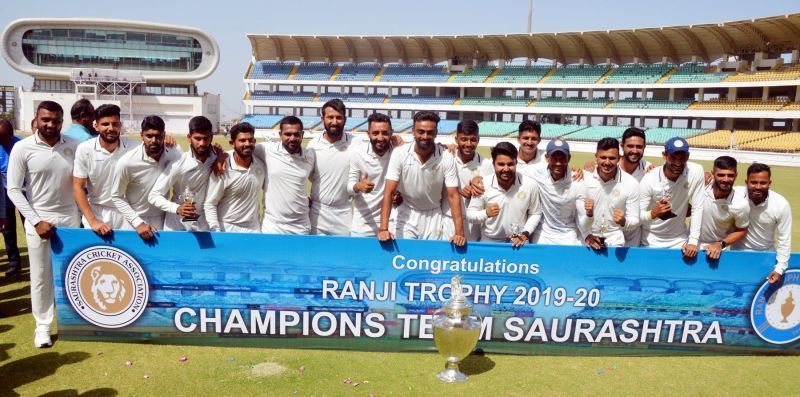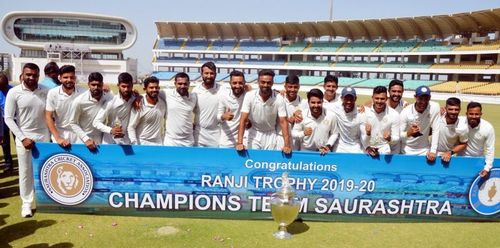
Domestic restructuring: An ironclad way for India to maintain their dominance in world cricket

Indian cricket has been on a high over the last few years; the team has performed well for the most part, barring an odd hiccup like the one against New Zealand recently. But while no one can dispute the skill and talent the current team possesses, establishing a strong bench is necessary for the Men in Blue to maintain the lofty standards that they have set.
Bench strength helps a team face all kinds of adversities, especially injury or lack of form. And it is a no-brainer that improving the standard of domestic cricket will go a long way in this regard. But the question is: how?
Ramping up the Duleep Trophy
Many argue that the Duleep Trophy should be made the primary domestic tournament in the country. The Duleep Trophy can be moved back to the erstwhile zonal competition format, which can be further improved if it is played on a home-and-away basis.
We can have a few pink ball matches thrown in as well to get the second string players acclimatized to day-night conditions. This will ensure the bench strength is tested against quality opposition even in domestic cricket, and that only the battle-hardened make it to the Indian team.
In other words, the Duleep Trophy can become the feeder system for international cricket, and the Ranji Trophy can in turn be the feeder system for Duleep Trophy.
Creative scheduling changes
The Indian domestic calendar should be structured creatively in such a way that Duleep Trophy matches begin on the second day of a Test match (in case there is an Indian home series in progress). That way, members of the squad who fail to make it to the playing XI for the Test match, can play competitive cricket in the form of Duleep Trophy.
Similarly, Ranji Trophy matches should start one day after that, so that the players left out of the Duleep Trophy playing XI can play at a level below. Moreover, the Ranji Trophy knockout matches could be scheduled after the completion of the Duleep Trophy. That would enable the best cricketers to be available for the Ranji teams in the knock-out stages, thus keeping the competitive spirit high in the deciding phase of the tournament.
Shadow India A tours
The India A program under the mentorship of Rahul Dravid has been a great success. It has paid rich dividends already, as can be seen by the success of players like Mayank Agarwal and Shreyas Iyer. This program can be enhanced further by increasing the frequency of tours for the A team.
One way to do that could be to have a shadow India A tour along with the Indian Test team. The A team tour could start a little earlier, so that some of the Test players can also play those matches - as was the case before India's recent tour of New Zealand.
Here again, the India A matches could be scheduled to start the day following the start of the Test match. That way the Test squad members who don't make the XI can play the A games and get sufficient match practice.
The Indian Test and A teams could practise together in the days leading to a Test match, ensuring that good quality opposition is available during the net sessions.
The presence of the A team in the same country would also help to get easy replacements for the main team in case of any injuries. The replacement player would already be acclimatized to the conditions too, instead of coming in cold.
The concept of shadow tours was also backed recently by Ajinkya Rahane. But Rahane also emphasized that the best benefits can be derived only if the playing conditions are similar to the international games.
"I feel it is important to have a shadow tour because you get to know the conditions really well," Rahane said. "The only thing I feel is the wickets that we get in shadow games are completely different than what we get in international games."
"That’s an area (of concern), but you cannot control that when you go overseas. But I feel if we can get similar conditions that we get in international matches, that will be better," he added.
The Board of Control for Cricket in India (BCCI) could try and exercise its clout in the international arena to get what Rahane asked for. Board President Sourav Ganguly took great pride in India's away Test performances when he was a player, so he will likely be keen to address this issue.
Having good bench strength is the best way forward for the Indian team. The three measures outlined above could help massively in this regard, as the fringe players would always be confronted with quality opposition and varying conditions. That in turn would ensure that only the most in-form players, who are also accustomed to playing in the current conditions, are picked for the national team.